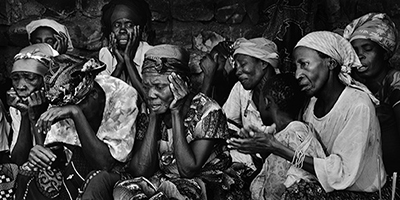
In August 2011, writing my first Letter from Eastern Congo, I had no idea of the extent to which my fieldwork in South-Kivu Province of the Democratic Republic of Congo (DRC) would change my life. I am not thinking here of the early morning of August 13, 2013, when a gun battle that lasted three hours awakened me to memories of childhood experiences in Germany during World War II. Here for a brief time, I experienced the chaos that the people of the eastern DRC have been facing, sometimes daily, for the past twenty years.
In my Cameras without Borders: Photography for Healing and Peace project I engage survivors of trauma in image making both in front and behind the camera (Riedel, 2013, p.11). The project has evolved and in conflict-ravaged, rural communities of the eastern DRC small groups of local people are increasingly involved in addressing the ‘collective trauma’ of epidemic violence and genocidal warfare (Riedel, 2014). This work is proceeding in collaboration with professionals and volunteers associated with the Great Lakes Foundation (GLF) for Peace and Justice, Pastor Bwimana Aembe, Director.
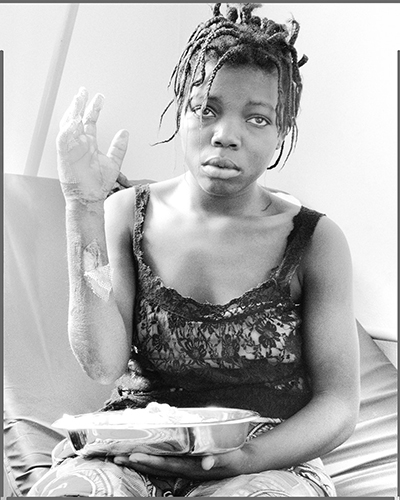
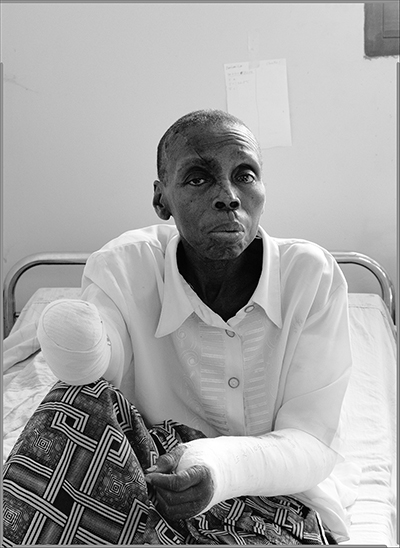
Intergenerational transmission of trauma is a serious problem because it fuels ever-more destructive cycles of violence. For example, in a village that had suffered horrible massacres I facilitated a support group for eight former child-soldiers; their average age was 16, but they had spent a total of 43 years in captivity in the bush, on average 5.4 years each. Later I engaged these young men in a psychotherapeutic photography workshop – I describe details of this technique and other examples in a journal article entitled, “Psychology, Photography, and Social Advocacy” (Riedel, 2013). One of the young men said to me, “You have given me something more important than money.” As a photographer and psychologist I seek to set into motion processes that help people transcend being paralyzed by trauma to being able to live with trauma.
Collective trauma dehumanizes individual and community life. In the contested areas of the eastern DRC sexual atrocities and torture are employed as weapons of warfare. In the aftermath, I frequently observe how traumatized communities scapegoat victims resulting in what I call ‘circular oppression.’ My mantra is de-traumatization means humanizing the situation.
Dehumanization extends to environmental problems. For example, I often observe how traumatized communities lose resilience and connection to indigenous roots and cultural values. Frequently trauma becomes a thinly veiled excuse for exploitation. We are or should be aware of the environmental trauma caused by international mineral exploitation in the eastern DRC. But it is no less disastrous when traumatized communities, for example, turn their old-growth forests into charcoal for sale, destroying the very resources on which their lives depended for centuries. In collectively traumatized communities human and environmental devastation are linked and must be addressed holistically.
The toxic repercussions of the confluence of the Rwandan genocide of 1994, and international mineral exploitation in the eastern DRC have set into motion a human tragedy of unspeakable brutality in which, since 1994, an estimated six million Congolese citizens have died. This is a horror the world widely ignores. My field experiences with my Cameras Without Borders project have convinced me that this overwhelming human suffering is not just a political issue, to be left to military and political solutions, but needs to be approached as a mental and public health problem. I am not the first person warning, “When we imagine that our psychology is separate from politics, we support violent conflict” (Audergon, 2004).
Through my photographic work in the DRC I came to realize that there is no logically foreseeable, linear solution to the complex collective trauma situation there. I began thinking in terms of dynamic patterns…of cycles (Riedel, 2014). For example, healthy situations are characterized by cycles of generativity and collective trauma situations by cycles of violence. Intervention requires interrupting the cycles of violence to help traumatized communities to connect with generative energies. It is not about getting it right at first try but about finding a process, which I call purposeful action that sets into motion cycles of healing. To be effective, change in these troubled regions must be homegrown, i.e. it must emerge out of the native environment rather than imposed from the outside.
When I ventured into South-Kivu Province, DRC, in 2011, over and over in traumatized rural communities I heard women and girls, all survivors of sexual atrocities and torture, ask for a “field hospital” that would tend to their physical and emotional wounds. The plight of child-soldiers, who are also the victims of rampant violence, was not different.
Over the past three years, listening to and working with trauma survivors, doctors at small rural hospitals, as well as community organizers the idea of a holistic Mobile Clinic Trauma Management project developed. The Pettit Foundation awarded my Cameras Without Borders: Photography for Healing and Peace project at Blue Earth a $50,000 grant. Their generosity is a great example of how partnerships between communities, documentary photographers, and foundations can yield concrete results.
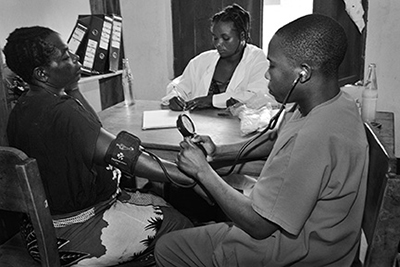
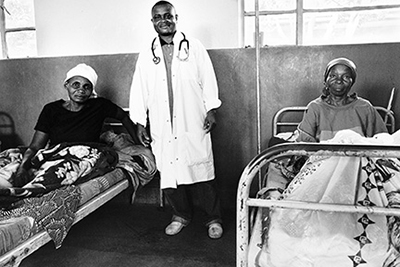
The Mobile Clinic pilot project provides not only medical and psychosocial treatment but also vocational training programs (Riedel, 2014). The project reaches out to rural areas where the Congolese trauma epidemic rages out of control and survivors have no access to medical care and many die. During its first year, the on-the-ground impact of the Mobile Clinic project is helping more than 1,000 survivors of war-related sexual atrocities and torture to access medical and psychosocial treatment. The project also provides seed money to communities for vocational training projects with the dual purpose of social reintegration of trauma victims and economic community development.
The training projects encourage local organizations to develop a sense of independence, decision-making, and acceptance of responsibility for making the Mobile Clinic Program self-sustaining. These expectations are strategically important to empower communities, overcome forces of social fragmentation, and counter the pervasive sense of helplessness and dependency associated with collective trauma: “Detraumatization means humanizing the situation.”
Eberhard Riedel, Photographer and Psychoanalyst
Visit Riedel’s project page Cameras without Borders: Photography for Healing and Peace at Blue Earth for a gallery of his recent photos.